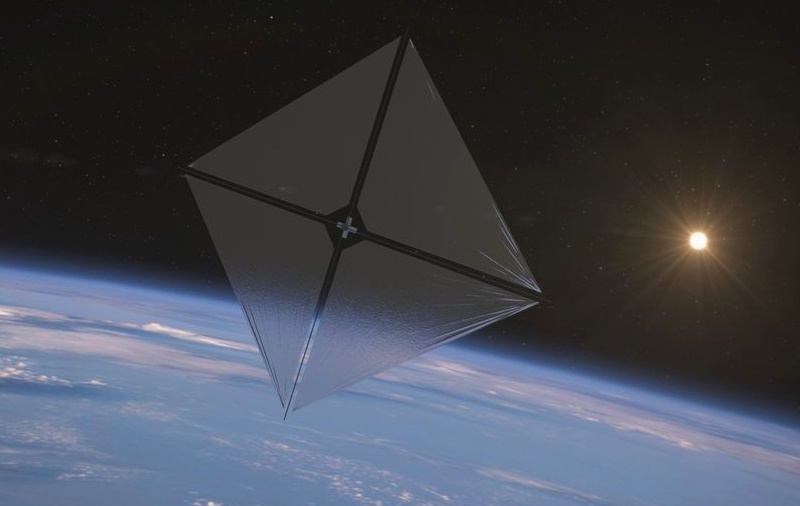NASA spacecraft runs on full solar sails despite a bent mast


NASA’s ACS3 (Advanced Composite Solar Sail System) spacecraft was launched on April 23 to test key aspects of solar sail operation and develop a strategy for propulsion using the solar wind. However, it was not without problems. When unfurling a sail with an area of 80 m2, one of the four masts was bent. NASA engineers believe that this will not interfere with maneuvers and other tests.


Image source: NASA
The ACS3 solar sail is supported in the deployed state by four extendable masts. The deployment of the sail began in August, and it recently became clear that the current design configuration is not quite as planned. “Although the solar sail has fully expanded to its square shape about half the size of a tennis court, the mission team is assessing what appears to be a slight bend in one of the four arms,” NASA said in a statement.
Four cameras on board ACS3 focus on four pieces of a solar sail supported by composite masts. The sail is rectangular in shape, but looks distorted due to the wide-angle lens. Mission operators are currently analyzing a small bend in the left corner of the lower left image.
NASA experts suggest that one of the masts bent during deployment. Then, as a result of the rotation of the ship, this bend could be partially straightened. The ship’s rotation was due to a planned shutdown of the attitude control system to “adjust to the changing dynamics of the spacecraft as the sail unfurls.” The system has not yet been reactivated, so the ACS3 continues to spin slowly.
NASA officials don’t see this as a big problem: “The mission team predicts that a slight bend in one of the four masts will not prevent the Advanced Composite Solar Sail System from performing sailing maneuvers later in the technology demonstration.”
To date, the solar sail has been used only a few times. The pioneer in 2010 was the Japanese Ikaros spacecraft, which used the solar wind in interplanetary space on its way to Venus. NASA’s NanoSail-D small spacecraft deployed its sails into low-Earth orbit at the end of 2010. In 2019, the non-profit organization Planetary Society launched the space sailboat LightSail-2.
In November 2022, NASA, during the Artemis 1 lunar mission, planned to launch a small probe with a solar sail, NEA (Near-Earth Asteroid) Scout, but communication with it was interrupted and its further fate is unknown.
Recent Posts
China’s XPeng Releases $20,000 MONA M03 Max Electric Car With Free Autopilot
Chinese company XPeng has unveiled the MONA M03 Max, a car with an AI-powered autonomous…
Sony lifts regional restrictions from Stellar Blade on PC, and a demo version of the game is released on Steam
The developers of the post-apocalyptic action game Stellar Blade from the South Korean studio Shift…
The Slormancer — Diablo Without the Frills. Review
Played on PC Over the last couple of years, the Diabloid subgenre has clearly entered…
Modder Already Added Two-Player Mode to Elden Ring Nightreign That Developers Forgot About
Less than a day has passed since the release of the cooperative roguelike action game…
Microsoft delays development of portable Xbox, will focus on partner consoles
According to Windows Central, Microsoft has postponed development of its own portable gaming console with…
A demo of Dispatch, a comedy game about a superhero agency from the former developers of Tales from the Borderlands and The Wolf Among Us, has been released on Steam
Developers from the American AdHoc Studio, founded by former Telltale Games, Ubisoft and Night School…